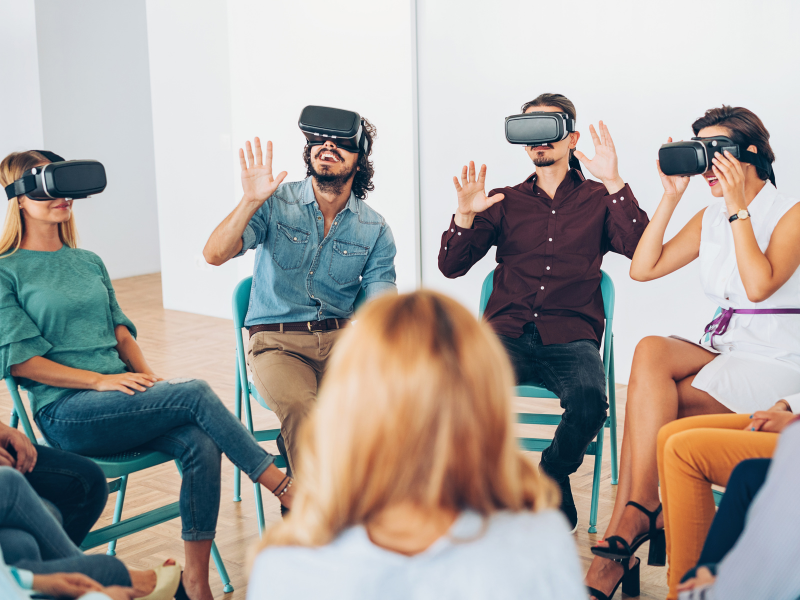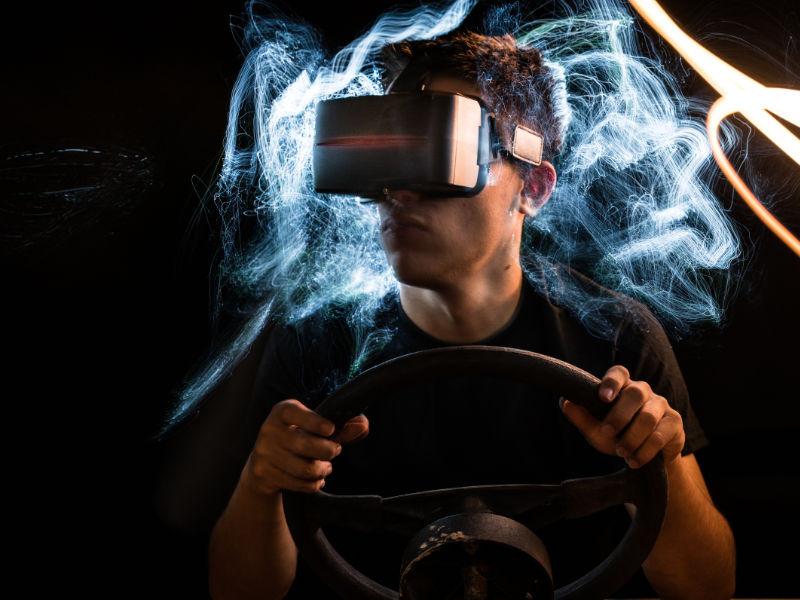Can VR help you bake a cake? Experts say it can!
“Priming” is a kind of “virtual rehearsal”

Imagine you're going to bake a cake. Before you start, you need to make sure you have all the ingredients you need. You might look at a recipe to see what you need to buy. But did you know that just seeing pictures of the ingredients can make you better at baking the cake?
That's called priming! Priming is when something in your environment makes you better at doing something else. In our example, looking at pictures of the ingredients can help you remember what you need and how much of each ingredient to use.
Priming can happen in all sorts of ways. For example, if you hear a sad song, you might feel sad too. Or if you see someone smiling, you might feel happy too.
But what does priming have to do with virtual reality (VR)?
Well, VR priming is a new way to help people prepare for things that might be difficult or scary. Let's say someone has a fear of flying. They might be really anxious about getting on a plane. But if they can practice being on a plane in a safe, controlled environment, like a VR simulation, they might feel more comfortable when it's time to actually get on a plane.
Practice recognizing emotions
VR priming is a type of therapy that uses VR technology to help people practice being in situations that might be stressful or scary. It's like a virtual rehearsal. By using VR to create a realistic simulation, individuals can practice being in the situation and learn how to cope with their emotions in a safe and controlled environment.

One of the most important benefits of VR priming is that it allows individuals to face their fears without actually putting themselves in harm's way. This can be especially helpful for people with anxiety disorders, phobias, or post-traumatic stress disorder (PTSD). By gradually exposing themselves to a situation that might cause anxiety or fear, individuals can build up their tolerance and learn how to manage their emotions.
Recognize triggers without being in danger
For example, VR priming can be used to help soldiers who have experienced trauma during combat. By using VR to simulate combat situations, soldiers can practice being in the situation without actually being in danger. This can help them learn how to manage their emotions and reduce the risk of developing PTSD.
VR priming can also be used to help individuals with social anxiety disorder. By using VR to simulate social situations, individuals can practice interacting with other people in a safe and controlled environment. This can help them learn how to manage their anxiety and feel more comfortable in social situations.
Customized, personalized experiences
Another benefit of VR priming is that it can be customized to the individual's specific needs. VR simulations can be tailored to the individual's preferences and can be adjusted based on their progress. This makes VR priming a highly personalized form of therapy that can be adapted to meet the unique needs of each individual.

Learn to drive, fly, or perform surgery
In addition to its therapeutic benefits, VR priming can also be used for education and training purposes. For example, VR simulations can be used to train pilots, doctors, and other professionals. By using VR to simulate real-world situations, individuals can practice their skills in a safe and controlled environment. This can help them learn how to handle challenging situations and improve their performance.
In conclusion, VR priming is a powerful tool that has the potential to help individuals overcome their fears and manage their emotions. By using VR technology to simulate real-world situations, individuals can practice being in the situation and learn how to cope with their emotions in a safe and controlled environment. VR priming is a highly personalized form of therapy that can be customized to meet the unique needs of each individual. As technology continues to advance, VR priming is likely to become an increasingly important tool in the treatment of mental health conditions and in education and training.
VR priming experts say:
- “Priming can have an effect on how individuals perform in a given task or situation, and this effect can be amplified with the use of virtual reality technology.” (Dr. Jodi D. Edwards, “The Effectiveness of Virtual Reality Exposure Therapy in the Treatment of Anxiety Disorders,” Dissertation, University of North Texas, 2014)
- “Using VR as a tool for priming has been shown to be effective in reducing anxiety and increasing performance in various scenarios, including sports and public speaking.” (Dr. Joshua Mora, “Virtual Reality and Its Potential for Therapy,” Journal of the American Osteopathic Association, 2019)
- “Studies have demonstrated the effectiveness of VR priming in improving the performance of individuals in high-pressure situations, such as surgery and combat scenarios.” (Dr. Hunter G. Hoffman et al., “Virtual Reality for Anxiety Reduction Demonstrated by Quantitative EEG: A Pilot Study,” Journal of CyberTherapy and Rehabilitation, 2009)
- “VR priming has been shown to be a promising tool in the treatment of anxiety disorders, including social anxiety disorder, specific phobias, and post-traumatic stress disorder.” (Dr. Stéphane Bouchard et al., “Using Virtual Reality in the Treatment of Anxiety Disorders: The Role of Emotion Regulation and Virtual Environments,” Expert Review of Neurotherapeutics, 2017)
